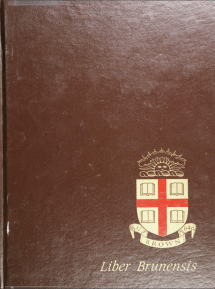Abstract
This interview with members of the Brown University class of 1983 showcases the undergraduate experiences of Judith Lynn Wells, Carmen Maria Garcia, Gwenn Ellen Masterman, Kay Lynne Levinson, Norah Gaughan, and Joan Marie Heminway, at their 25th reunion.
The interview begins with an introduction from each participant including her name, major, current occupation, and place of residence. They continue to share their reasons for attending Brown, their first experiences on campus including a sex education session held in the dormitories, and the humbling nature of trying to balance the new curriculum that abolished course requirements, and social activities. The interviewees describe social life in the dorms including alcohol, drugs, and the rising drinking age, as well as student activities like band, Brown Community Outreach, and dance.
They all express admiration for President Howard Swearer, Dean Harriet Sheridan, and Dean Barrett Hazeltine. Individually they recognize Provost Maurice Glicksman and professors Roger Henkle, Michael Harper, Keith Waldrop, Hugh Townley, and Joan Wallach Scott.
The interview concludes with a brief discussion about working on and off campus in addition to learning how to respond to the noticeable social divide based on race in places like the dining hall.
Recorded on May 24, 2008, Pembroke Hall, Brown University, Providence, RI.
Interviewed by Jane Lancaster
Suggested Chicago style citation: 25th Reunion, class of 1983. Interview. By Jane Lancaster. Pembroke Center Oral History Project, Brown University. May 24, 2008.
Biography
During the class of 1983’s senior year, George Black sued Brown University for racial discrimination and racial violence was rampant on campus leading to student protests against racism. Art professor Rudolf Winkes sued Brown for sexual discrimination on claims that the dean of the faculty violated the Fair Labor Standards Act by providing a higher salary to a female colleague of equal status. Three women spray-painted anti-rape messages on Brown property were suspended while students formed the Brown Against Rape organization. The Lesbian and Gay Student Alliance brought awareness to Brown’s gay community and AIDS became a well-known issue. Less dramatically, the new curriculum went under review and a freshman Curriculum Advisory Program was created to improve student-faculty advising issues.
